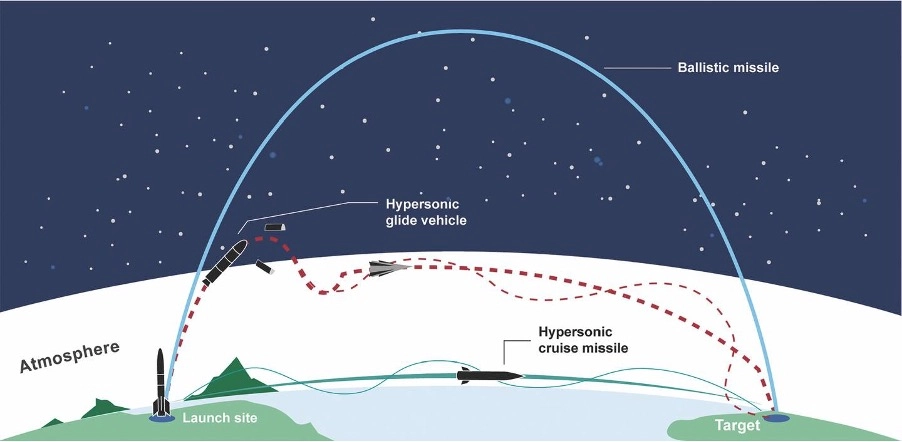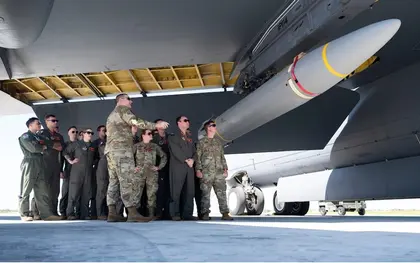The US Air Force announced that it had carried out what was billed as the final test of the Lockheed Martin hypersonic AGM-183A Air-launched Rapid Response Weapon (ARRW) on Sunday without declaring whether the test was successful or not.
An Air Force spokesperson said a B-52H Stratofortress had taken off from Andersen Air Force Base in Guam and launched the fully operational ARRW prototype at the US Army Reagan Test Site, near the Kwajalein Atoll in the Marshall Islands, a straight-line distance of 0ver 2,500 kilometers (1,560 miles).
JOIN US ON TELEGRAM
Follow our coverage of the war on the @Kyivpost_official.
The spokesperson did not give details of the test’s objectives or whether they had been successfully achieved merely saying, “This test acquired valuable, unique data and was intended to further a range of hypersonic programs. We also validated and improved our test and evaluation capabilities for continued development of advanced hypersonic systems.”
The test is thought to be the final assessment after a program that had been years in development and which some commentators had suggested was cancelled last year.
The AGM-183 ARRW is a multi-stage hypersonic, “boost-glide,” air-to-ground missile. It is initially launched by a rocket motor. Once it reaches its operational height the attack vehicle separates from the launch motor and is boosted to a speed of more than Mach 5 using a modified version of the US Army’s ATACMS missile. Once at hypersonic speed the attack glide body is released to maneuver to the target.

Kuleba Talks Peace in China – Bohdan Nahaylo
The ARRW is one of four hypersonic missiles that Lockheed Martin is believed to have in development, each with varying missions and flight profiles:
- Conventional Prompt Strike (CPS) missile is a hypersonic boost-glide missile providing longer range, shorter flight times, and high survivability against enemy defenses.
- Hypersonic Air-Launched Offensive Anti-Surface Warfare (HALO ASW) would be launched from navy carrier-born aircraft to engage high-value surface threats.
- Long-Range Hypersonic Weapon (LRHW) a mobile platform launched surface-to-surface missile sharing the same ARRW hypersonic glide body.
The US Air Force is also believed to be working alongside the US Defense Advanced Research Projects Agency (DARPA) which has been developing its own Hypersonic Air-breathing Weapon Concept (HAWC) missile system, a hypersonic air-to-air system.
The attraction of the latest generation hypersonic weapons is not only the speed at which they travel but their ability to fly at a much lower trajectory than conventional ballistic missiles and can maneuver midflight. making them much harder to track and increases their ability to evade and penetrate anti-missile defenses. This is illustrated in the graphic below.

The US test came just days before North Korea claimed to have tested its own hypersonic weapon and Russia launched more of its Kinzhal near-hypersonic missiles in attacks against Kyiv on Wednesday.
The US Department of Defense spent close to $5 billion (£4 billion) on hypersonic missile development in the previous year amidst criticism from Congress for the slow progress it was making, as China and Russia declared it was already ready to field operational missiles.
You can also highlight the text and press Ctrl + Enter






